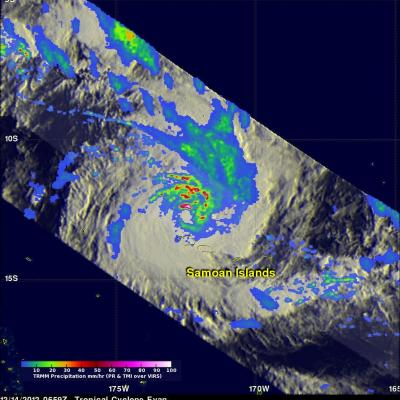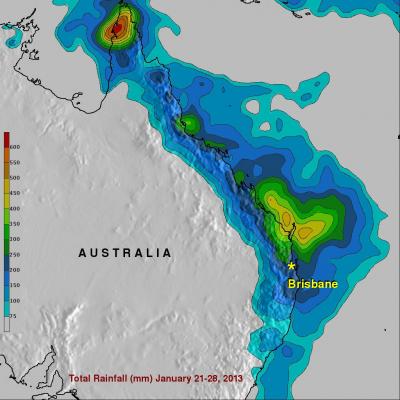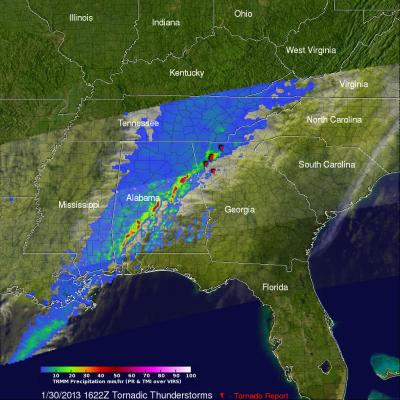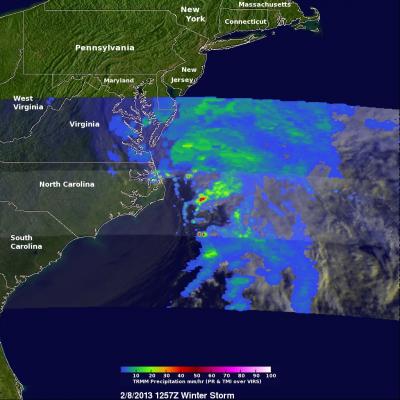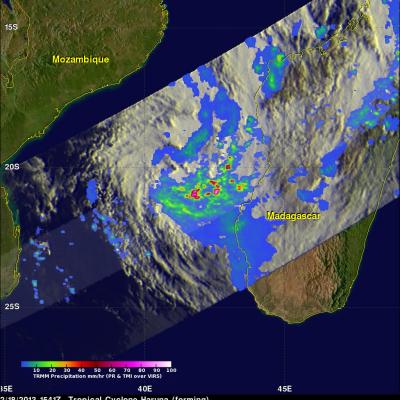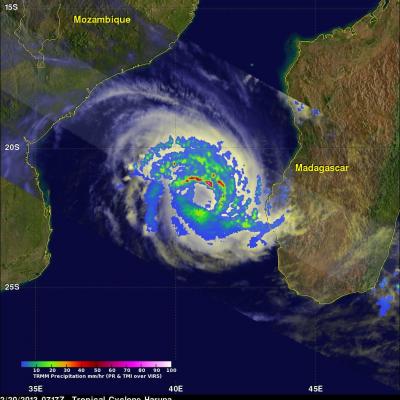Tropical Cyclone Rusty Moves Into Australia
On February 27, 2013 at 0559 UTC The TRMM satellite again saw tropical cyclone Rusty moving toward Australia's coastline north-west of Hedland. A rainfall analysis derived from TRMM's Microwave Imager (TMI) data is shown overlaid on a visible/infrared image from the TRMM Visible and InfraRed Scanner (VIRS). Rusty's eye, surrounded by light to moderate rainfall, was revealed by TRMM's TMI data to be located very near the coastline. Click here to see an animation which fades from the underlying visible/infrared image to the TMI rainfall analysis image. Tropical cyclone Rusty is predicted to



